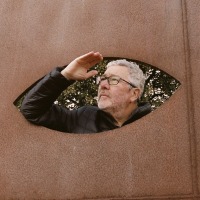Limited edition (9,999 devices) is as well equipped as it is designed. Its 4TB drive and high-speed USB 3.0 interface* deliver more than enough performance to handle even the most data-intensive tasks. The aluminum casing makes the LaCie Blade Runner one of the most resistant and coolest desktop drives on the market. The radiator design rapidly dissipates heat to help boost performance and ensure long-term reliability. Philippe Starck's signature cross symbol appears as an LED power button on the front of the LaCie Blade Runner—glowing orange when the drive is powered on, or green when the drive is in Eco Mode.
Blade Runner is more than just a beautifully designed hard drive – it's a creation by famous French designer Philippe Starck that has collaborated with LaCie represents the combination of human and machine. The LaCie Blade Runner's sharp, cage-like enclosure surrounds an almost anthropomorphic, liquid metal interior. This metaphor was inspired by a cyber future illustrated in the 1982 movie "Blade Runner," and begs the question – just how much control do we have over technology?
More information
Published on:
January 7, 2013
Cite:
"LaCie "Blade Runner" hard drive by Philippe Starck" METALOCUS.
Accessed
<https://www.metalocus.es/en/news/lacie-blade-runner-hard-drive-philippe-starck>
ISSN 1139-6415
Loading content ...
Loading content ...
Loading content ...
Loading content ...
Loading content ...
Loading content ...
Loading content ...
Loading content ...
Loading content ...
Loading content ...
Loading content ...
Loading content ...
Loading content ...
Loading content ...
Loading content ...
Loading content ...
Loading content ...
Loading content ...
Loading content ...
Loading content ...
Loading content ...
Loading content ...
Loading content ...
Loading content ...
Loading content ...
Loading content ...
Loading content ...
Loading content ...
Loading content ...
Loading content ...
Loading content ...
Loading content ...
Loading content ...
Loading content ...
Loading content ...
Loading content ...
Loading content ...
Loading content ...
Loading content ...
Loading content ...
Loading content ...
Loading content ...
Loading content ...
Loading content ...
Loading content ...
Loading content ...
Loading content ...
Loading content ...
Loading content ...
Loading content ...
Loading content ...
Loading content ...
Loading content ...
Loading content ...


























